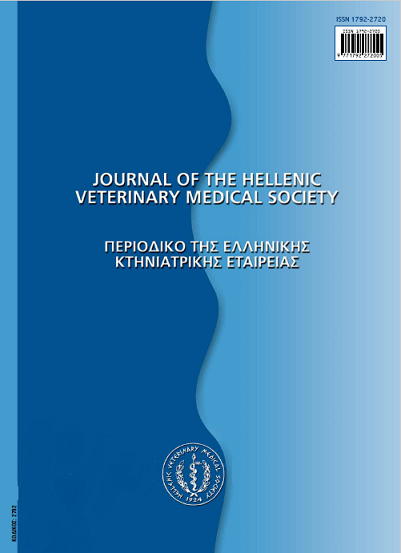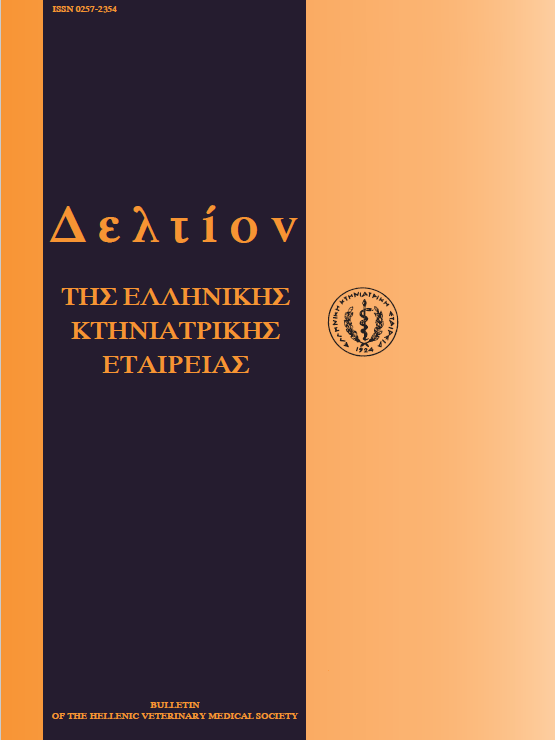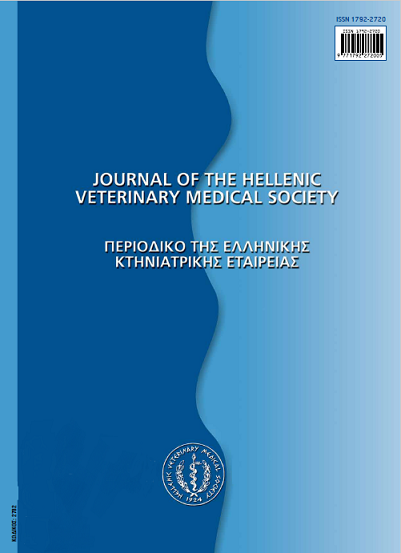Isolation, characterization and sequence determination of Noda virus from sea bass (Dicentrarchus labraxL.) reared in freshwater and marine facilities in Greece
Abstract
The present study aims το characterize Noda virus isolates from freshwater and marine fish, specifically from species Dicentrarchus labrax (sea bass). Previous works reported the detection of Noda virus only by using PCR, in cultured Dicentrarchus labrax showing clinical symptoms. Here we describe the isolation of Noda virus from symptomatic sea bass cultured in sea and freshwater facilities in Greece. The virus was isolated in the continuous cell line SSN -1, exhibiting characteristic cytopathic effect, vacuolation and degeneration of the monolayer. In parallel, in all cerebral tissue samples isolated from infected individuals, a 255 bp viral fragment has been detected, using Reverse Transcription - Polymerase Chain Reaction (RT-PCR) and nested PCR. Comparison of the amplified sequence was detected in diseased fish in European farms and in other piscine species revealed a high nucleotide homology.
Article Details
- Zitationsvorschlag
-
XYLOURI (Ε. ΞΥΛΟΥΡΗ) E., KOTZAMANIS (Ι. ΚΟΤΖΑΜΑΝΗΣ) J., ATHANASSOPOULOU (ΑΘΑΝΑΣΟΠΟΥΛΟΥ Φ.) F., DONG, L., ARGYROKASTRITIS (ΑΛ. ΑΡΓΥΡΟΚΑΣΤΡΙΤΗΣ) A., & FRAGKIADAKI (ΕΙΡ. ΦΡΑΓΚΙΑΔΑΚΗ) E. (2017). Isolation, characterization and sequence determination of Noda virus from sea bass (Dicentrarchus labraxL.) reared in freshwater and marine facilities in Greece. Journal of the Hellenic Veterinary Medical Society, 56(2), 105–113. https://doi.org/10.12681/jhvms.15074
- Ausgabe
- Bd. 56 Nr. 2 (2005)
- Rubrik
- Research Articles
Authors who publish with this journal agree to the following terms:
· Authors retain copyright and grant the journal right of first publication with the work simultaneously licensed under a Creative Commons Attribution Non-Commercial License that allows others to share the work with an acknowledgement of the work's authorship and initial publication in this journal.
· Authors are able to enter into separate, additional contractual arrangements for the non-exclusive distribution of the journal's published version of the work (e.g. post it to an institutional repository or publish it in a book), with an acknowledgement of its initial publication in this journal.
· Authors are permitted and encouraged to post their work online (preferably in institutional repositories or on their website) prior to and during the submission process, as it can lead to productive exchanges, as well as earlier and greater citation of published work.





